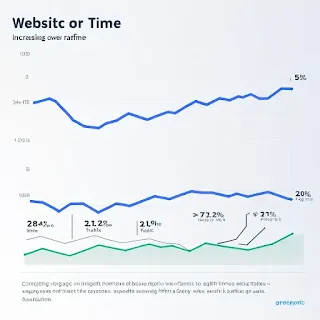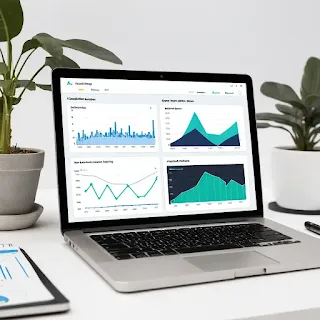The digital landscape is constantly evolving, and 2025 presents a unique set of challenges and opportunities for website owners aiming for top search engine rankings. While the core principles of SEO remain consistent, the methods of submission and optimization are becoming increasingly nuanced. This comprehensive guide will walk you through the process of submitting your website to search engines in 2025, covering crucial aspects beyond simply submitting a URL.
Beyond Simple Submission: A Holistic Approach to Search Engine Visibility
In the past, submitting your website to search engines often involved simply using a webmaster tool's submission form. However, in 2025, this is only a small part of a much larger strategy. Search engines like Google, Bing, and others are prioritizing websites that offer high-quality content, excellent user experience, and strong technical foundations. Simply submitting your site isn't enough; you need to actively optimize it for discoverability.
1. Technical SEO: Laying the Foundation for Discoverability
Before even thinking about submitting your website, ensure its technical SEO is robust. This forms the bedrock upon which all other SEO efforts are built. Key aspects include:
-
XML Sitemap: Create and submit an XML sitemap to Google Search Console and Bing Webmaster Tools. This acts as a roadmap for search engine crawlers, guiding them to all the important pages on your website. Several tools can help generate this automatically.
-
Robots.txt: Carefully configure your robots.txt file to control which parts of your website search engines can and cannot access. Incorrect configuration can prevent crucial pages from being indexed.
-
Structured Data Markup (Schema): Implementing schema markup helps search engines understand your content better, leading to richer search results (like featured snippets) and improved click-through rates. Schema.org provides a comprehensive vocabulary for structured data.
-
Mobile-Friendliness: With mobile usage exceeding desktop in many regions, a mobile-first approach is non-negotiable. Ensure your website is responsive and provides a seamless experience on all devices.
-
Page Speed: Slow loading times lead to high bounce rates and negatively impact user experience, which search engines penalize. Optimize images, leverage browser caching, and utilize a Content Delivery Network (CDN) to improve page load speed.
2. Content is King (and Queen): Creating High-Quality, Engaging Content
High-quality content remains the cornerstone of successful SEO. Focus on creating valuable, original, and engaging content that satisfies user search intent. This involves:
-
Keyword Research: Identify relevant keywords your target audience is searching for. Use tools like SEMrush, Ahrefs, or Google Keyword Planner to discover high-volume, low-competition keywords.
-
On-Page Optimization: Strategically incorporate keywords into your page titles, headings, meta descriptions, and body content. Avoid keyword stuffing, which can harm your rankings.
-
Content Strategy: Develop a content calendar to ensure consistent content creation. Diversify content formats (blog posts, videos, infographics) to appeal to a broader audience.
-
Content Updates: Regularly update your existing content to keep it fresh and relevant. Search engines reward websites that maintain up-to-date information.
3. Off-Page Optimization: Building Authority and Trust
While on-page optimization focuses on your website itself, off-page optimization involves building your website's authority and reputation through external factors:
-
Backlink Building: Earn high-quality backlinks from reputable websites in your niche. Focus on earning links naturally through content marketing, guest blogging, and building relationships with other website owners. Avoid black hat techniques like buying links, which can severely damage your rankings.
-
Social Media Marketing: Promote your content on social media platforms to increase visibility and drive traffic to your website. Engage with your audience and build a community around your brand.
-
Local SEO (If Applicable): If your business has a physical location, optimize your Google My Business profile and ensure consistent NAP (Name, Address, Phone number) citations across the web.
4. Submitting Your Website to Search Engines
Once your website is technically sound and populated with high-quality content, it's time to submit it to search engines. This involves:
-
Google Search Console: Verify ownership of your website and submit your XML sitemap. Monitor your website's performance, identify crawl errors, and address any issues.
-
Bing Webmaster Tools: Similar to Google Search Console, Bing Webmaster Tools allows you to submit your sitemap, monitor performance, and address any technical issues.
-
Other Search Engines: While Google and Bing dominate the market, consider submitting your website to other search engines like DuckDuckGo, Yahoo, and others, depending on your target audience and geographic location.
5. Monitoring and Analysis: Continuous Improvement
Submitting your website is not a one-time event. Regular monitoring and analysis are crucial for continuous improvement.
-
Google Analytics: Track your website traffic, user behavior, and conversion rates. Identify areas for improvement based on the data.
-
Search Console Data: Regularly check your Search Console data for crawl errors, indexing issues, and other problems that may affect your rankings.
-
SEO Tools: Utilize SEO tools to monitor your website's performance, track keyword rankings, and identify opportunities for improvement.
FAQ:
Q: How long does it take for my website to appear in search results after submission?
A: There's no guaranteed timeframe. It depends on several factors, including the search engine's crawling frequency, your website's technical SEO, and the competitiveness of your keywords. It can take anywhere from a few days to several weeks or even months.
Q: Do I need to pay to submit my website to search engines?
A: No, submitting your website to major search engines like Google and Bing is free. Beware of companies offering paid submission services; these are generally scams.
Q: What if my website isn't showing up in search results?
A: Check your website's technical SEO, ensure your sitemap is submitted correctly, and investigate potential indexing issues using Google Search Console and Bing Webmaster Tools. Consider whether your content is high-quality and relevant to your target keywords.
Q: How often should I update my website's content?
A: There's no magic number, but aim for consistent updates. Regularly adding fresh, relevant content signals to search engines that your website is active and valuable.
Q: What are the key differences in submitting to Google vs. Bing?
A: The core process is similar – submitting sitemaps and verifying ownership. However, the analytics dashboards and features differ slightly. It's beneficial to use both Google Search Console and Bing Webmaster Tools for a comprehensive view of your website's performance across both engines.
By following these steps and consistently optimizing your website, you can significantly improve your chances of achieving high search engine rankings in 2025 and beyond. Remember that SEO is an ongoing process, requiring continuous effort and adaptation to the ever-changing search engine algorithms.







Please be polite while you write a comment for this blog post news